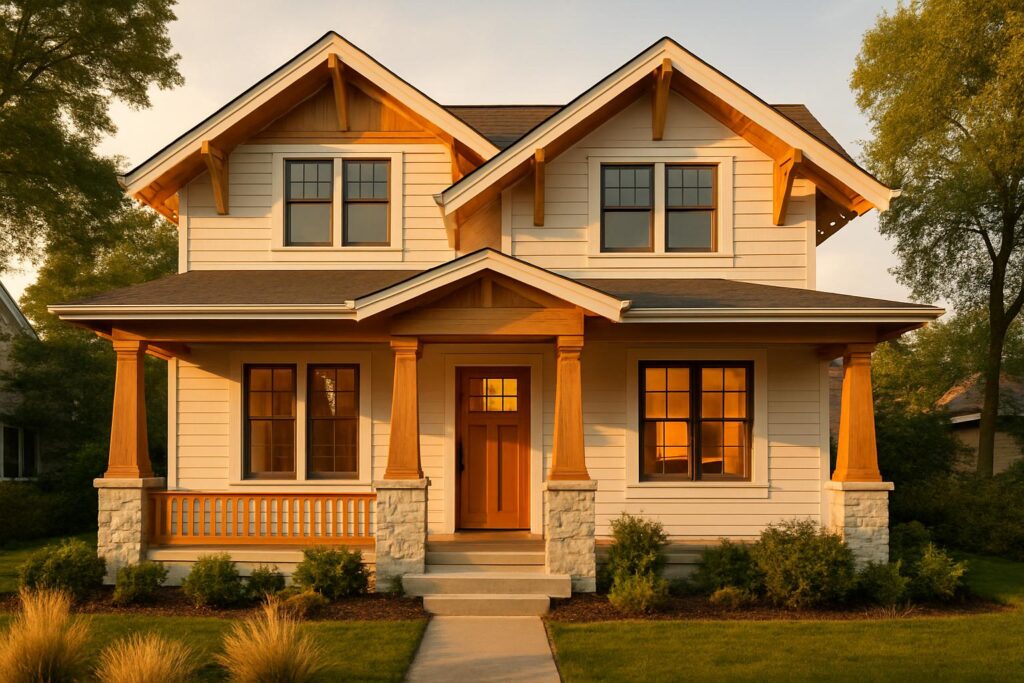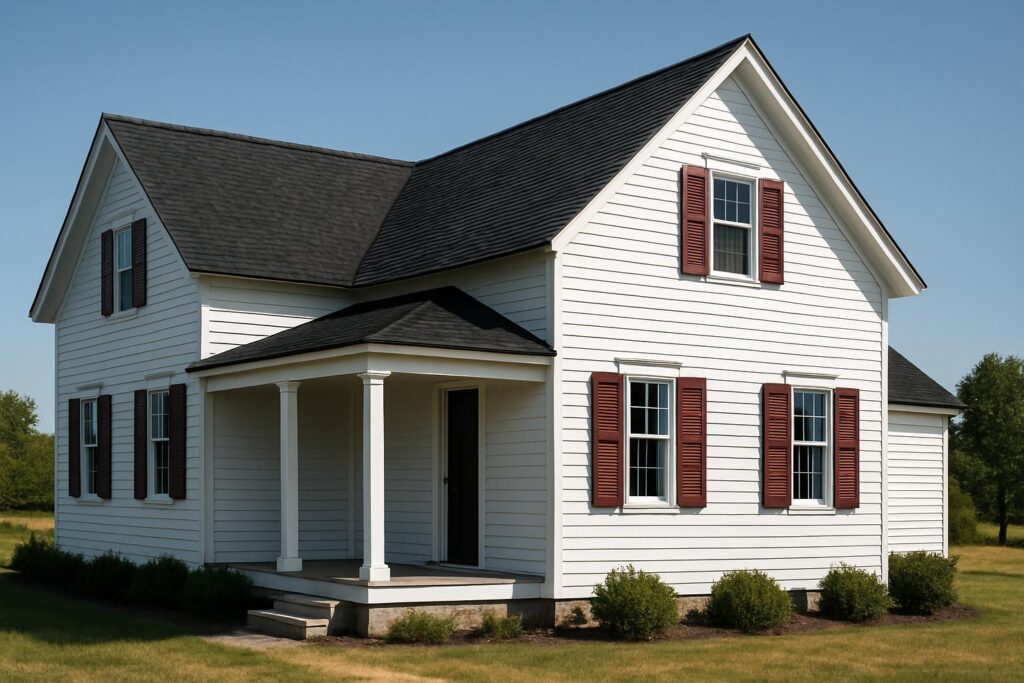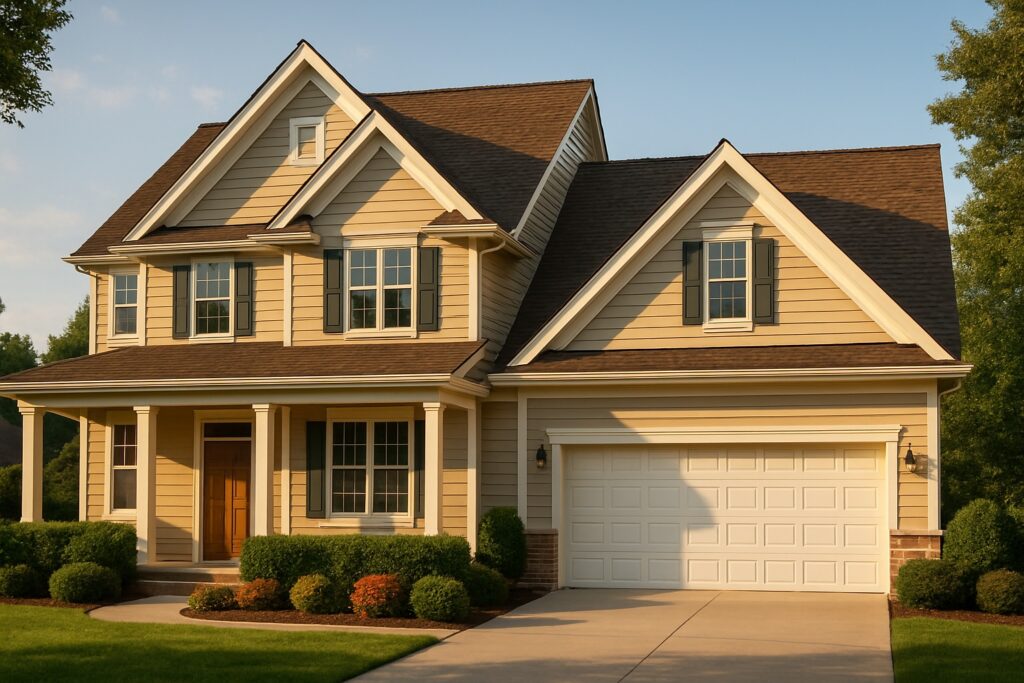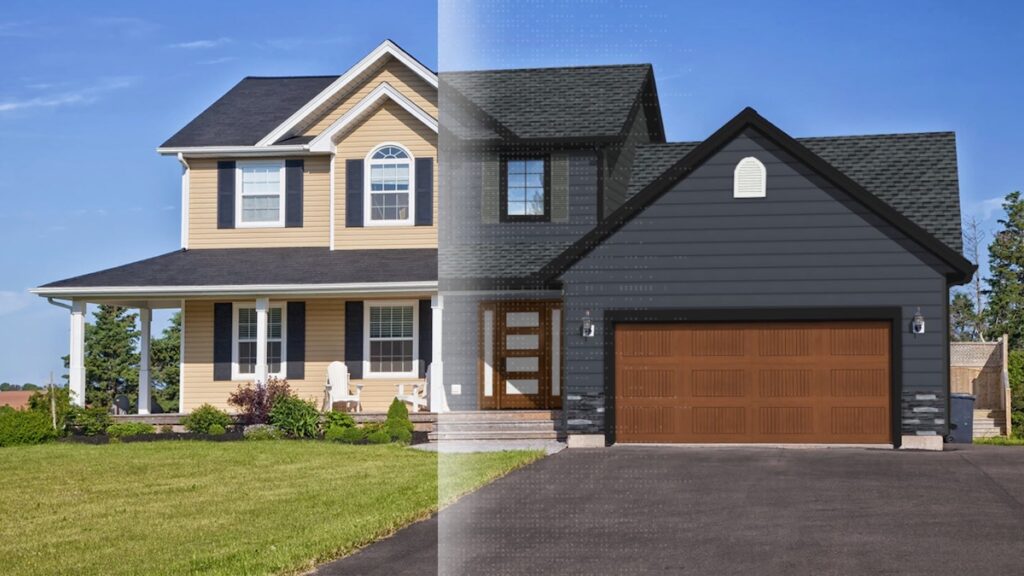TLDR
Dark gray houses are one of the most in-demand styles in today’s housing market, blending white trim, balanced paint color palettes, and carefully chosen roof and shingle options.
A well-executed color scheme highlights architectural detail and maximizes resale value.
Homeowners should test every shade of gray, from charcoal to light gray, before committing.
Contractors recommend adding shutters, natural wood, or stone as accent features.
Blending grey side panels, trim, and balanced side color creates a complete home exterior.
The easiest way to achieve perfection is to preview options digitally with the Renoworks Visualizer.
Start designing your dark gray house today with the Renoworks Visualizer:
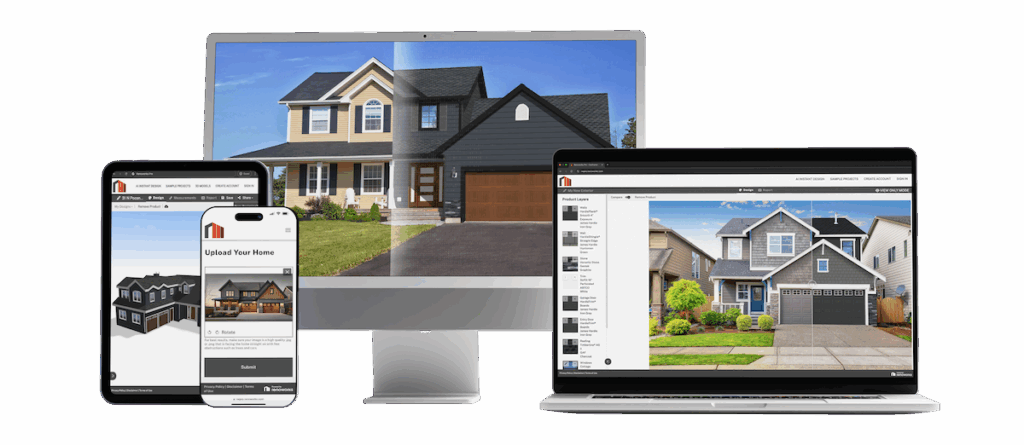
Why Dark Gray Houses Lead Modern Home Design
A dark gray house makes a statement. Across neighborhoods, homeowners increasingly choose dark gray siding to create a balance of sophistication and durability. Unlike fleeting trends, dark gray houses stand the test of time, especially when paired with the right trim, roof, and paint color.
The Contractor’s Perspective
From a contractor’s viewpoint, grey remains the most versatile option. Whether used on the front elevation or the side, the shade adapts to both modern and traditional designs. Choosing the proper tone ensures the home design feels intentional. A neutral base allows accent features—like wood, stone, or brick—to elevate curb appeal.
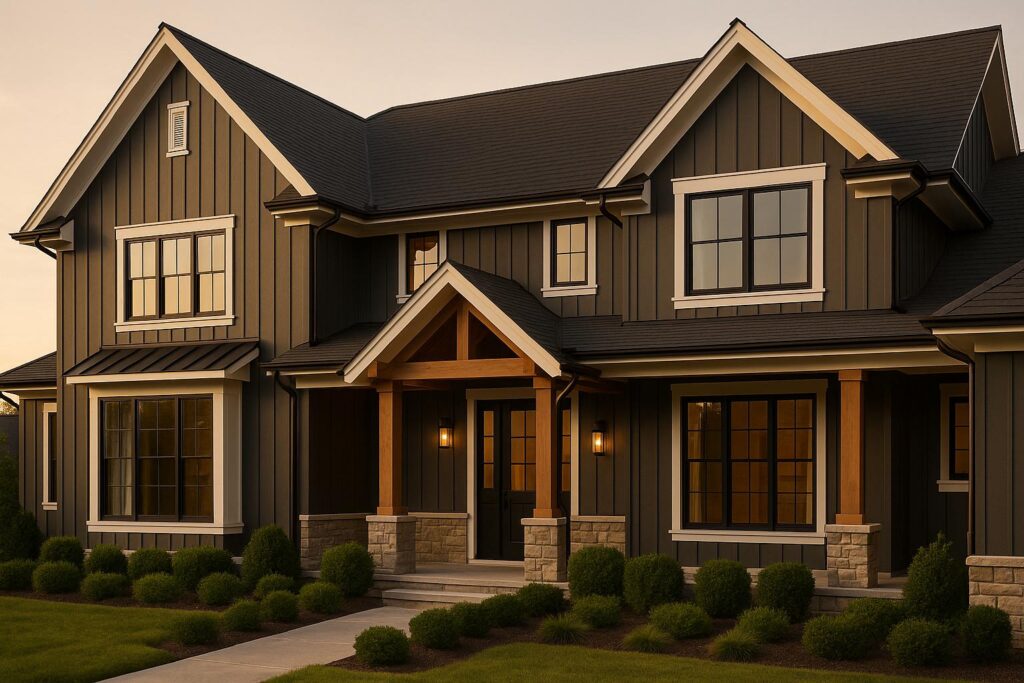
The Role of Trim in Gray House Design
One of the most common questions contractors hear is: How do you make a gray house pop? The answer lies in the trim.
White trim creates striking contrast against dark gray siding, framing windows and doors with crisp edges.
Pairing trim with shutters introduces depth. Black or navy shutters against grey side siding highlight balance.
Using board and batten with complementary trim adds dimension, particularly on the porch.
Homeowners should remember: trim is not just decorative—it defines the boundaries of every side of the house. The right trim choice transforms a flat grey side into a vibrant, structured home exterior.
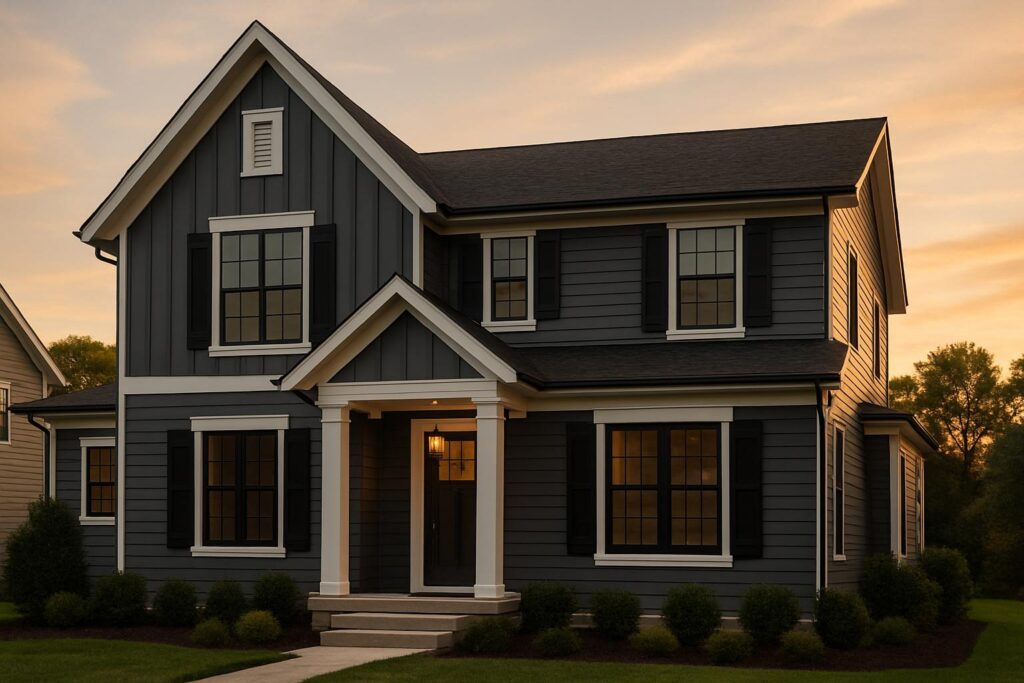
Roof and Shingle Choices for Dark Gray Houses
The roof plays a defining role in any home exterior. For dark gray houses, the most successful combinations come from shingle choices that harmonize with siding.
A charcoal roof provides seamless integration with dark gray siding.
Black shingles deliver a sleek, modern finish.
For softer looks, light gray shingles pair beautifully with white trim and balanced paint colors.
Contractors often warn homeowners not to overlook roofing because it covers such a large percentage of visible home exterior. Choosing the wrong roof shade can throw off the entire color scheme.
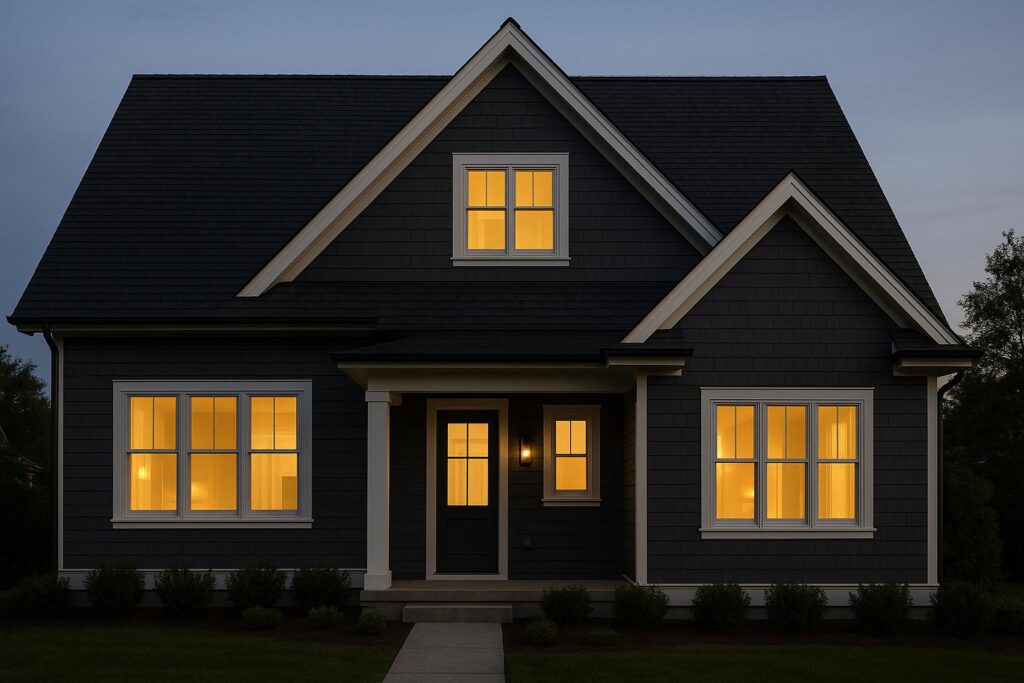
Accent Materials that Complete the Look
A dark gray house risks feeling flat without thoughtful accent features. Fortunately, natural elements add depth:
Stone bases or columns provide grounding.
A brick facade softens the overall tone of the house.
Wood porches, beams, or shutters add warmth.
A two-tone approach, such as mixing light gray with deeper charcoal, enhances proportion.
These materials act as the personality of a dark gray house. Contractors recommend starting with a defined palette that incorporates accent color options early in the process.

Shades of Gray: From Light to Charcoal
Light Gray vs. Dark Gray
Using light gray on the second story while keeping dark gray on the first creates a two tone balance. Contractors call this method “layering,” where the side color shifts across elevations to create dimension.
Understanding Undertones and Hues
Every gray paint has an undertone. Some lean blue, some green, others violet. Identifying the right hue avoids clashing. For example, a greige siding with a beige undertone works perfectly with natural wood accents, while a strong charcoal with a cool undertone aligns with a sleek modern design.
Subtle vs. Bold
Not every homeowner wants dramatic contrast. A subtle shade of gray still provides elegance, particularly when paired with neutral landscaping or muted accent colors. Contractors often recommend this approach for traditional neighborhoods.
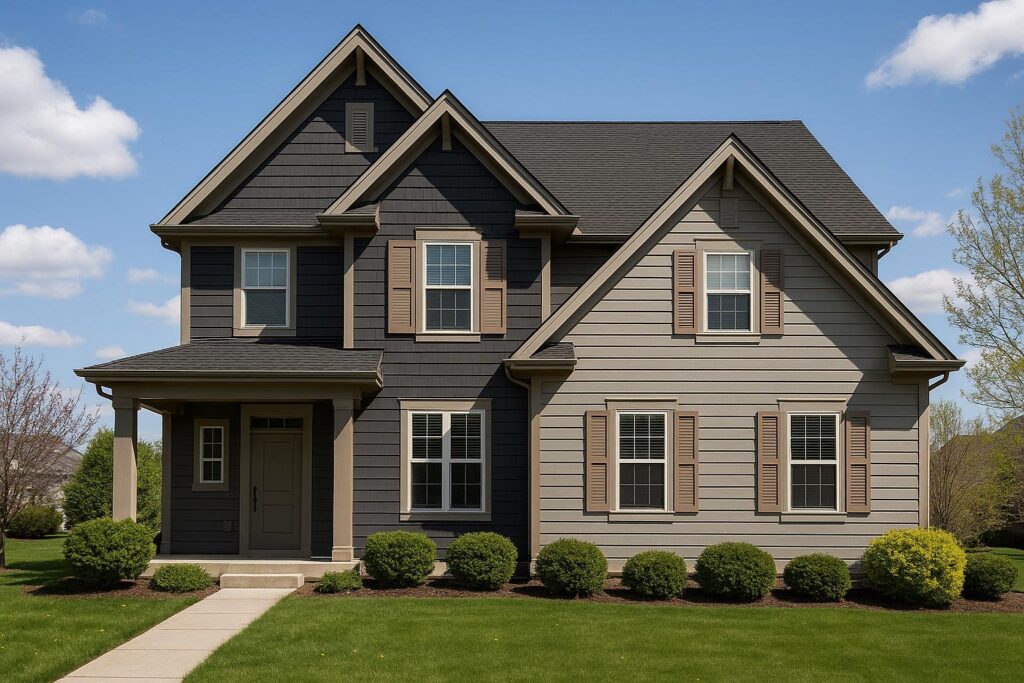
HOME VISUALIZER TOOL
Still Imagining? Start Designing.
Visualize your home — for free. Instantly explore siding styles, colors, and renovations with just one photo. No forms. No pressure. Just results.

Architectural Details that Matter
Architectural detail turns a basic gray house into a memorable one. Features like gables, board and batten, or a covered porch create visual interest. When these details are highlighted with trim and an intentional color scheme, they strengthen the overall aesthetic.
Contractors emphasize using architectural detail sparingly: highlight the front elevation, then simplify the side. This avoids overwhelming the eye while keeping the design cohesive.
Palettes and Planning for Home Design
Before painting or building, map out the palette. A strong color scheme defines whether your dark gray house will appear modern, rustic, or traditional.
Grey side siding with white trim and a charcoal roof gives a bold, modern edge.
A greige paint color with taupe trim feels softer and more inviting.
Pairing grey with natural stone or wood introduces warmth.
The Renoworks Visualizer enables homeowners to test every paint color, shade, and accent virtually. This planning step ensures the final home exterior matches both aesthetic goals and resale strategy.
Cost, Value, and Long-Term Benefits
Investing in a dark gray house isn’t just a design decision—it impacts property value.
Real estate studies show grey homes with white trim sell faster.
Contractors estimate that upgrading siding with a cohesive color scheme boosts resale value by 5–10%.
Proper paint color and trim selection reduces long-term maintenance since grey side siding conceals dirt better than lighter alternatives.
In addition, homeowners who select durable shingles, balanced undertones, and strategic accents report fewer repainting projects and higher buyer interest.
Conclusion & Call to Action
Dark gray houses balance timeless beauty with modern flexibility. By choosing the right paint color, trim, roof, and accent materials, homeowners create a complete home exterior that looks stunning and increases resale value.
Ready to visualize your dream dark gray house? Preview every paint color, shade, and side color combination now with the Renoworks Visualizer.
FAQ
What colors go with dark gray siding?
Dark gray siding pairs best with white trim, wood, stone, and brick. Contractors often suggest adding an accent color like navy or forest green to shutters or doors.
Is dark gray a good color for a house exterior?
Yes. A dark gray house offers a timeless aesthetic, adapts to every climate, and highlights architectural detail. When paired with the right trim and roof, it remains stylish for decades.
What color roof looks best with a gray house?
A charcoal roof or black shingle design typically complements a gray house. For softer looks, a light gray roof with white trim maintains balance.
How do I choose an accent color for my gray house?
Homeowners should pick an accent color that ties into landscaping or material choices. Wood doors, navy shutters, or even muted reds provide contrast without overwhelming the grey side siding.
What is the most popular shade of gray for houses?
The most popular shade of gray is charcoal. However, blends like greige or two tone styles with light gray continue to trend upward.


